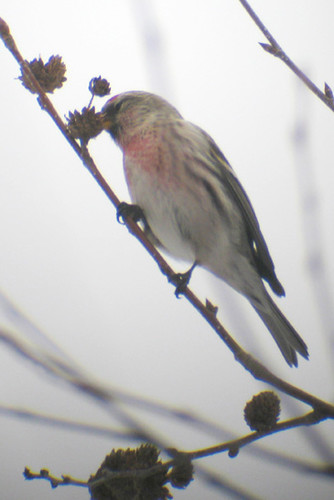 |
Four shorebirds whiz by the shore of a
sandbar on Lake Champlain. |
It was the first day of September, a federal holiday, and a
picture-perfect summer afternoon; the waters of Lake Chaplain were packed with
canoes, kayaks, jet skis, and sailboats. As my wife and I paddled through the
shallow waters of the Winooski River delta, we saw two dogs racing
energetically from one side of a large sandbar to the other. It wasn’t until
peering through my binoculars that I saw why the dogs were so frantically
running back and forth.
The dogs were chasing shorebirds. On August 27, local birders
Jim Mead and Ted Murin discovered a Red Knot, a rare sighting in Vermont, on
that same sandbar. Almost every day since its initial sighting, Jim had
observed the Knot, sometimes with other shorebirds and sometimes all by itself.
As we paddled closer, we could see that the Red Knot was one of four birds
being pursued by the eager canines. Every time the birds would land, the dogs
were close behind. Much to my surprise, the shorebirds were persistent and
continued to return to the small sand island again and again, only to be chased
off once more.
 |
The shorebirds were relentlessly pursued by the
dogs until their owners intervened. |
After several minutes of cat-and-mouse, or rather,
dog-and-shorebird, it became clear that the birds were intent on staying put.
We decided to paddle to the dog owners who were conversing in the shallow
water as their dogs ‘got some exercise’. After greeting them as we paddled
close by, I kindly told them, “I don’t know if you realize, but your dogs are
chasing a group of shorebirds. These birds are actually quite rare around here
and seem to really need this island. As much as the dogs chase them, the birds
keep coming back”. I didn’t want to lecture these strangers, nor did I want to
blame them or shame them. Without further elaboration, they replied, “we didn’t
realize, we’ll call them in now,” and within minutes, they were back in their
canoes, rowing away as their dogs swam alongside.
 |
Red Knot (front), Semipalmated Sandpiper (middle),
and Sanderling (back) return to feeding after
the dogs and their owners disperse. |
The shorebirds quickly resettled on the sandbar and began
feeding. They allowed me to approach quite closely and photograph them without opposition.
I later saw the same canoers on shore and one seemed eager to learn more about
the birds. I explained to her how they breed in the arctic and can migrate
thousands of miles over open ocean in a single flight. I showed her a picture of the Red Knot
and told of how its population has declined drastically in recent years and
could be in danger of extinction. She seemed intrigued and enlightened.
As is often the case, a little education went a long way
towards changing a behavior for the benefit of wildlife. It can be hard to
approach a stranger, especially when you anticipate how they will react. But it
is always better to be actively engaged than to be a passive bystander, no
matter what reaction you receive. And always remember, if you are kind,
considerate, and open, you increase your chances of being heard. Whether you
are asking a neighbor to keep their cats indoors or reminding a friend to
recycle, these little things add up. Make sure you are doing your part for the
environment by being part of the conversation. As lovers of nature, we have a
lot to teach and society, as a whole, has a lot to learn.
 |
Red Knot catches a worm. After nearly a week refueling in Vermont,
it still has over 5,000 miles left to go to reach its wintering grounds. |












